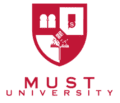Active Learning
MUST is a regional leader in the application of active learning strategies. MUST educators strive to create a learning environment in which students actively participate in the learning process, through engaging activities that help them apprehend new concepts and integrate them with previously acquired knowledge to compose it into new knowledge, completing the gaps and necessary connections and going well beyond superficial learning.
Research evidence is now overwhelmingly supporting our long-held intuition that students learn best when they engage with course material and actively participate in their learning. Across cultures, we can identify proverbs and pieces of common wisdom underlying that learning best occurs “by doing”.

Yet the traditional teaching model has for the most part positioned students as passive receptors by structuring class sessions around the transfer of information from professor to student.
While active learning is not new, the accumulated and quantified research evidence, especially in the fields of neurology and science of learning, on the effectiveness of active learning approaches together with advances in digital technologies and learning analytics, are now opening fresh opportunities for the effective implementation of active learning methodologies.
Digital revolution-enabled blended learning platforms are already challenging existing models of higher education. Hybrid learning can improve learning outcomes by complementing in-class sessions with self-paced personalized training employing effective visual aids and interactive content. When adequately integrated in a comprehensive teaching methodology, online courses can allow in-class sessions to be more interactive and engaging by preparing students beforehand in the foundations of the material being discussed.
In such an approach, online courses are employed as a preparation for in class sessions. Students arrive to classes with less heterogeneity and sharing a basic grasp of essential foundations. Furthermore, they are more prepared to engage in discussions, design projects, problem solving, and other activities that are more engaging and therefore more effective in achieving desired outcomes.
This approach also allows professors to spend more time during in-class sessions in value-added activities that make students benefit from the experience and knowledge of their instructors. Passive transfer of information is best reserved for online platforms and self-paced learning methods. More advanced aspects are best discussed in the presence of experts as they tend to require interaction and supervised problem-solving.
Significant challenges remain to the effective implementation of this approach. This is why our Active Learning Technologies Centre and our experienced and innovative faculty are working on innovative models to make higher education more effective and enjoyable and to make MUST the University of the twenty first century.
The video at the top of the page is an overview of active learning at MUST. You are welcome to get in touch with one of our academic advisors to learn more about active learning and other innovative aspects of our teaching approach.
